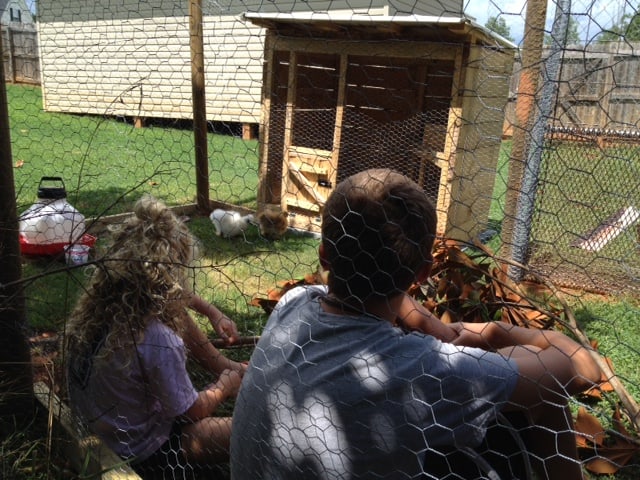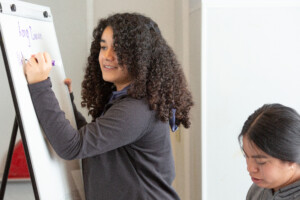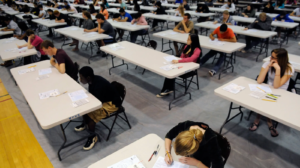The Talent & the Agent: My Desired Class
The students and the teacher, the audience and the speaker, the players and the coach, the learners and the sage: I could go on forever with the many ascribed labels attached to the occupants of a classroom, and depending on the structure, purpose, and direction of the class, these tags can be negative or positive in nature. Leaning on Johann Wolfgang von Goethe’s famous “frightening conclusion” quotation, I am Zen-like in my focus on the classroom atmosphere and I intend to create – the talent and the agent this upcoming school year. By developing flexible lesson plans, implementing interactive learning structures, and engaging the customers with passion-based projects, the class of my dreams will be a reality.
Skeletal Lesson Plans
Lesson plans should be skeletal in nature. The assigned curriculum and all its supporting standards and literature act as a strong but flexible framework for the students to continually add muscle and flesh by challenging, playing, and wrestling with the daily tasks. With a supple but fluid approach for each unit, students sense the freedom to suggest further exploration while dropping creative hints for engaging classroom activities. Some of the best lessons I have ever witnessed were ignited by students’ original questions and ideas. Who knows how many times I was too focused on one of my golden lesson plans to hear the heartbeat of the class. Maybe if I slow down enough to learn the likes and dislikes of each student, I will keep a steady finger on the pulse of the class.
Interactive Learning Structures
Drawing from authentic learning structures such as “Doorball,” “Cell Phone and Literary Seismograph,” “Bullet Train,” “The Chosen Ones,” “Voting Chips,” and “Wax Museum,” students participate in interactive classroom designs that foster responsibility, creativity, spontaneity, and collaboration. These learning activities offer an organized but unscripted atmosphere for students to work with the assigned standards in individual and team settings. The energy and level of engagement is quite contagious, and the students oftentimes enter class asking to continue a certain structure from a previous lesson.
Passion-Based Projects
As all educators know, balance can sometimes be a four-letter word. How much time should be given for projects? How many traditional settings are effective? How can interactive learning styles develop mastery of the assigned standards? The questions keep coming and are sometimes collectively answered only after subjecting any teaching theories to experimentation in the actual classroom. One such experiment that continues to yield excellent results is the passion-based project. Whether drawing from our shared Symbaloo webmix or from creative ideas that involve little or no technology, passion-based projects where students merge their personal interests with the assigned standards are a lock. They simply work. I witnessed this truth firsthand this summer when my eighth grade, suburbanite son asked me to help him construct a basic chicken coop with the ultimate conclusion of owning several Silky chickens. The result was more than I could imagine. Not only did we construct a very cool enclosure for a few furry hens, but an engaged middle-school learner and his sister realized the world is the true classroom.

For the last four years in our class, Studio 113, students have blown us away with original paintings illustrating an in-depth understanding of symbolism, with painstaking lyrics for a new thematic song covering Dark Romanticism (scroll down to second song), and with action-packed videos featuring zip-lining superheroes who speak using examples from AP Language literary terms. To drop it like it’s hot, students have talent. They can even take something as mundane as discussing strategies for multiple-choice questions and transform it into a multi-camera movie trailer that has the audience looking for the ticket booth.
Maybe students just want to have fun with the assignments. Maybe it is how they learn best – by creating. Maybe they subscribe to Will Smith’s quotation: “The greatest dreams are always unrealistic.” Whatever it is, students can consistently create original music videos or literary remakes that not only master the standards but also bend and shape the lessons into something new, something that resembles art. Ah, but that would label the students as artists. Fine with me. I will gladly stand back and admire the talent as long as students do not believe the only things they create are the illusions that their level of engaged learning can be qualitatively and quantitatively measured by standardized test scores. As for the talent and the agent, I simply hope my skills match the students’ potential aptitude. After all, who wants to be “fired” by a class of bored students who are hungry to unveil their personal interests and abilities? That would be mismanagement of talent.








Jana
You sound like an awesome teacher, but it also sounds like you having amazing students. Have a great school year!